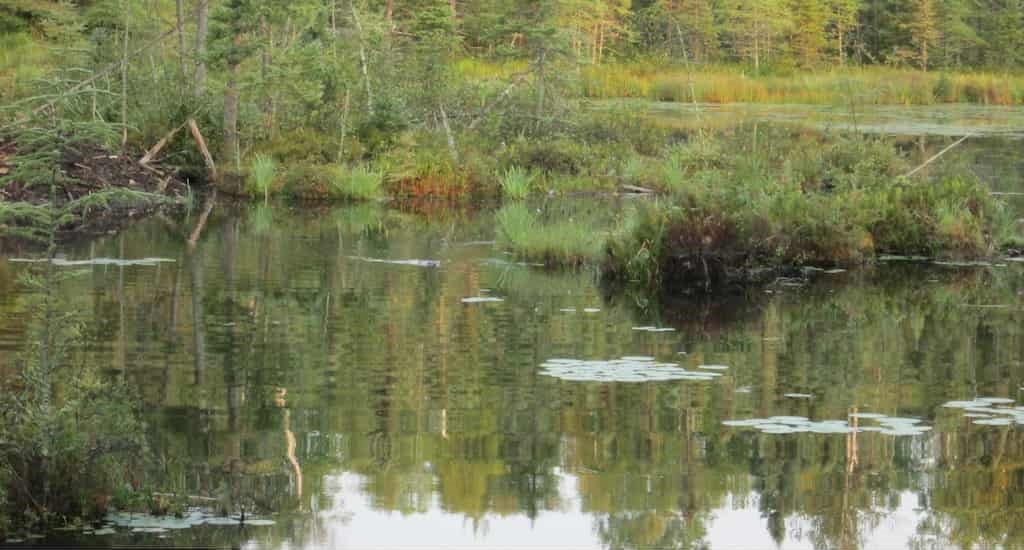
Why should you be concerned about AIS?
Aquatic invasive species (AIS) are non-native organisms living in water that cause economic and environmental harm
- AIS out-competes and displaces native species
- AIS degrades water quality, negatively impacts our aquatic resources (such as game fish), makes recreation challenging, and affects the aesthetic of being on or near the water
- AIS have economic effects of reducing property values, and tourism
Research has found that AIS have economic effects of reduced property values, less tourism, and lower employment, but these effects are less certain.
Ecosystem degradation
- Zebra mussels and spiny waterfleas may improve water quality, but they greatly reduce the quantity of zooplankton and phytoplankton in the water leading to clearer, but less healthy aquatic ecosystems by disrupting the food web.
- Phytoplankton and zooplankton are the base of the food web, so when their populations decrease because of zebra mussels and/or spiny waterfleas, there is less food available for small fish species and game fish juveniles (fry and fingerlings). Not enough food for juvenile game fish reduces survival rates to adulthood and stunts their growth (permanently smaller game fish sizes) while fewer small fish species reduces the population capacity of full-grown game fish within the lake, which negatively impacts your fishing experiences.
- These ecosystem impacts are here for the long-term and are currently non-reversible.

Recreation
- Numerous navigation challenges occur on the water from invasive aquatic plants (curly-leaf pondweed, Eurasian watermilfoil, and starry stonewort) and algae.
- These aquatic invasive plant species thrive and make it difficult to swim, paddle, sail, and motor through the dense amount of biomass that reaches the surface of the water. The navigational challenges can be managed, but generally requires expensive annual management with chemicals and/or mechanical removal of biomass.
- As a dramatic example, fishing tournaments on Lake Mille Lacs now fish for bass instead of walleye.
- People of all ages now need water shoes to avoid getting their feet cut by razor sharp zebra mussel shells.
- Harmful blue-green algae (actually bacteria) blooms are made worse by zebra mussels, producing toxins that can make people and animals sick and has killed dogs.
Aesthetic affected
- The atmosphere of being on or near the water is negatively impacted by the results from AIS.
- The water, when viewed from the shore, a dock, a boat isn’t inviting when there are large patches of invasive plants or mats of algae sitting on the surface, emitting foul smells.
HERE is more information about AIS, including the impacts of any specific aquatic invasive species.
- MN DNR – Invasive aquatic plants
- MN DNR – Invasive aquatic animals
- MN DNR – Infested waters list
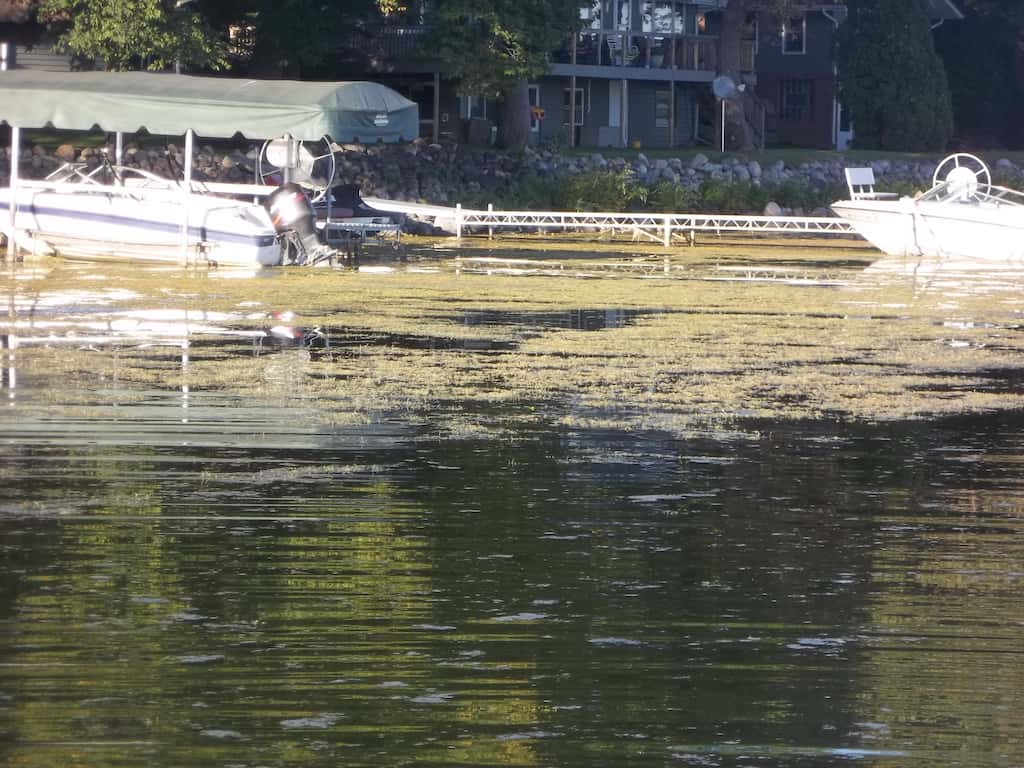
Minnesota has several “nasty” AIS – more are coming
The large and popular lakes in MN have at least one AIS. Some have more.
- Every year more water bodies in Minnesota become infested with AIS.
- Counting infested lakes belies the seriousness of the problem
- Counting infested surface area tells the real story
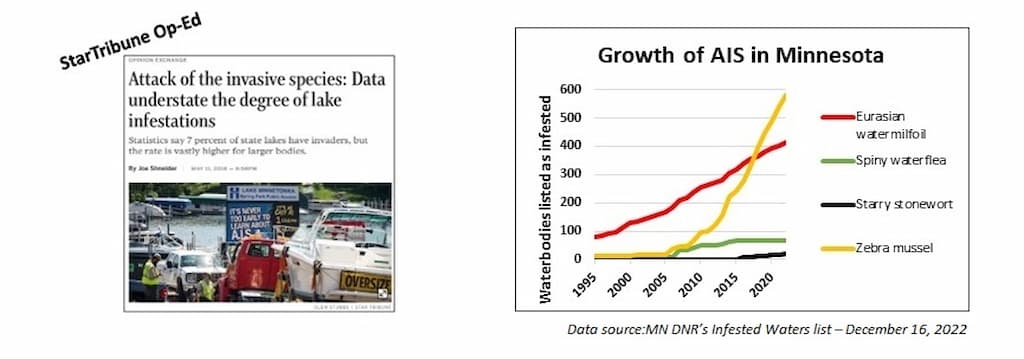
AIS plants of greatest concern
Curly-leaf pondweed, Eurasian watermilfoil, starry stonewort, hybrid cattail, flowering rush, purple loosestrife and phragmites
- Typically controlled with herbicides or other approaches
- Eradication is elusive
- More research is being conducted
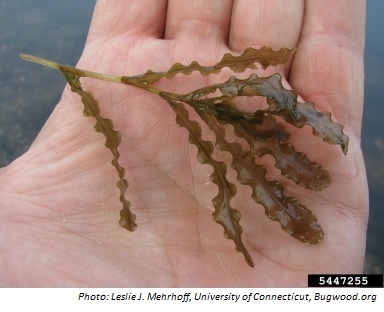

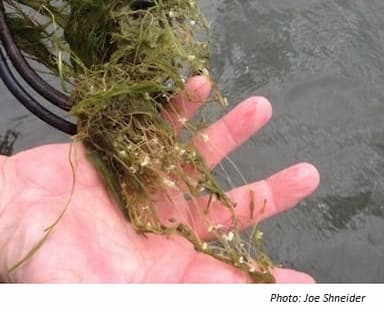
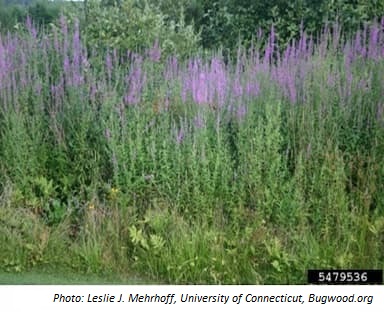
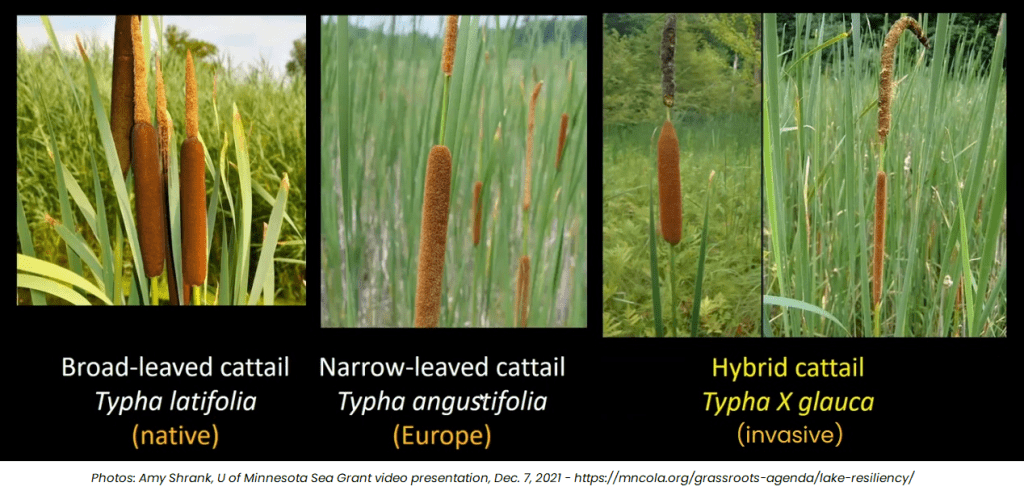
Hybrid cattail can backcross with Broadleaf Cattail, making it look native but still act invasively, so genetic testing may be required. Growth habits could be used as an indicator if it is native or has invasive genetics.
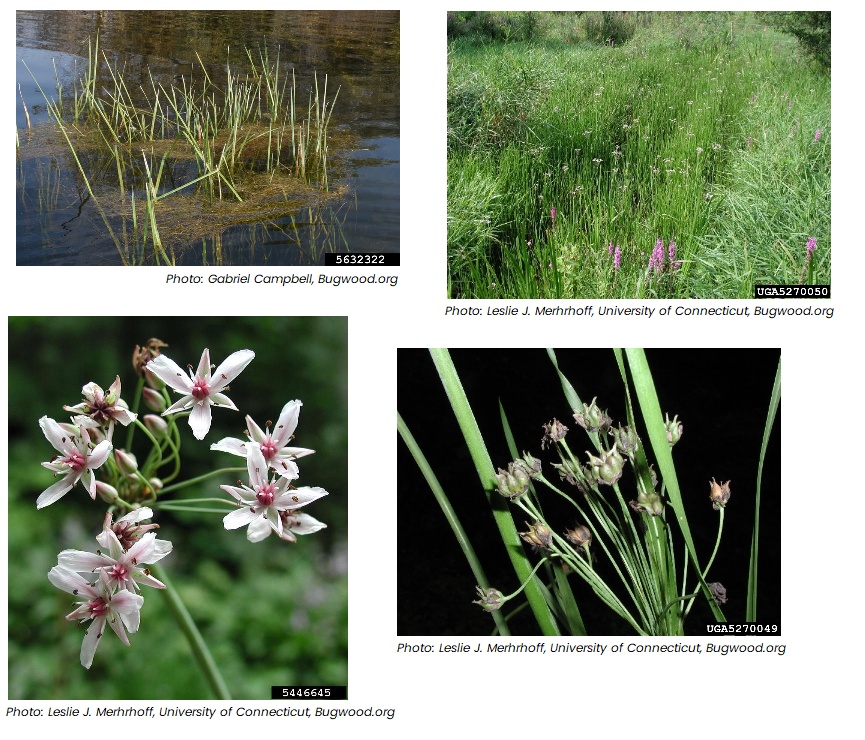
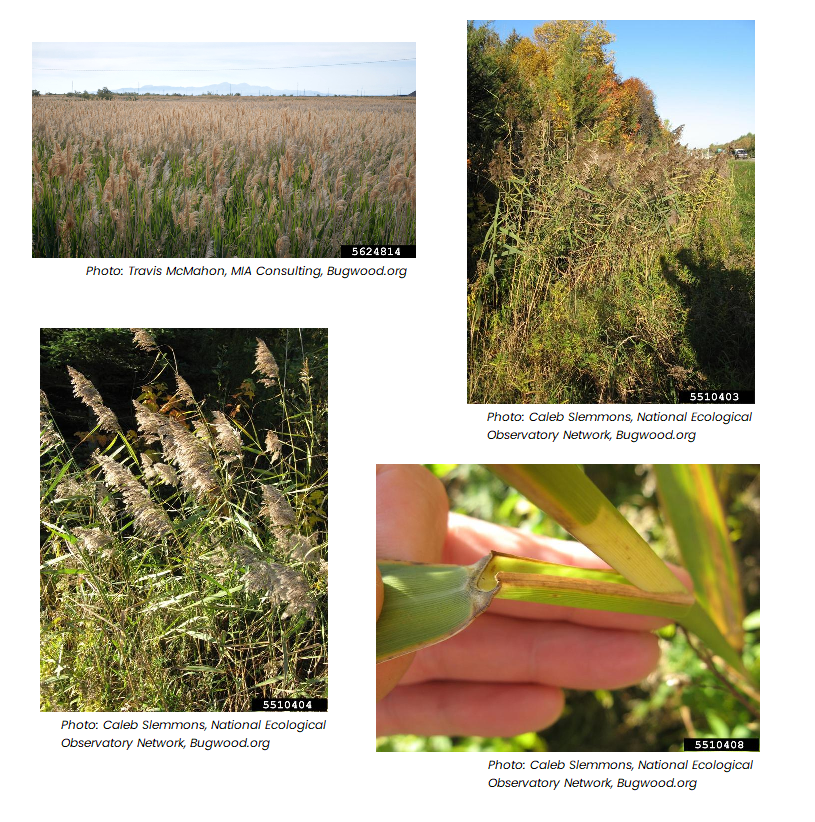
Through the collaborative work of MAISRC, MDA, MNDNR, and MNDOT, there is a chance of eradicating invasive Phragmites in Minnesota. Examples of invasive Phragmites are shown immediately above, while examples of native Phragmites are below. Refer to the MAISRC page on invasive Phragmites for further information.
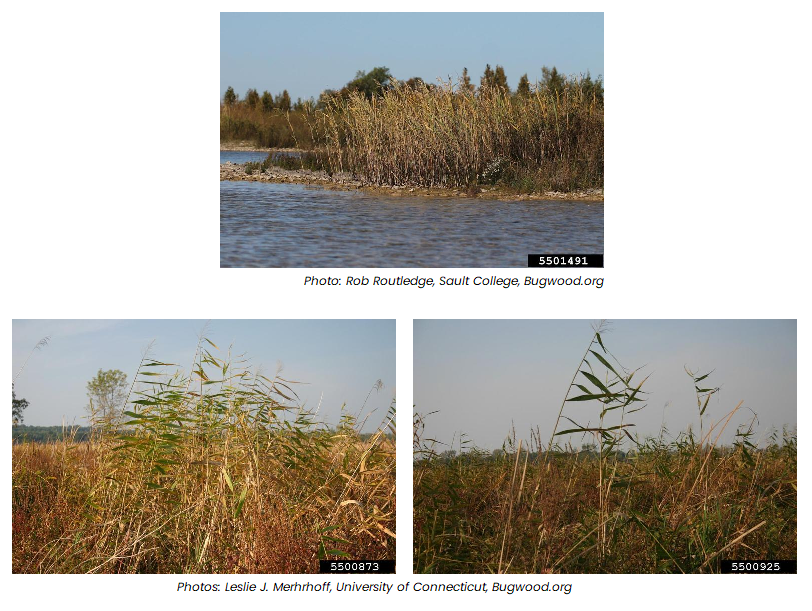
AIS animals of greatest concern
Zebra mussels, spiny waterfleas, and rusty crayfish
- Eradication is near impossible
- More research is needed for control
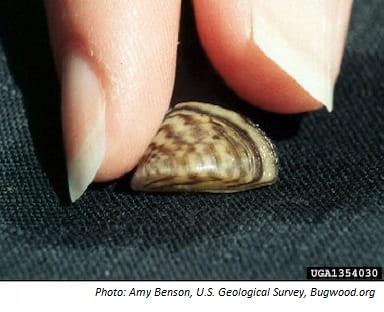
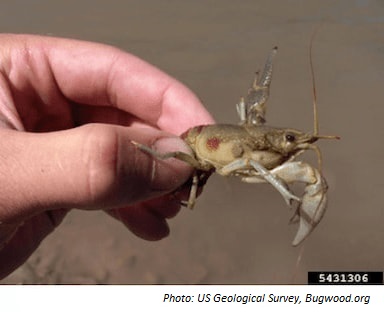
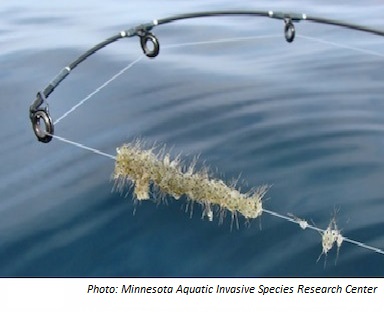
Coming Soon to Minnesota: Hydrilla
- Grows up to 25 feet and branches at the surface
- Forms dense mats making boating very difficult
- U.S. Fish and Wildlife says “Hydrilla is an aquatic plant that has earned the illustrious title world’s worst invasive aquatic plant”
- We need to keep this one out of Minnesota!
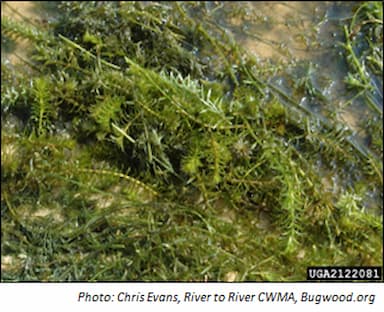
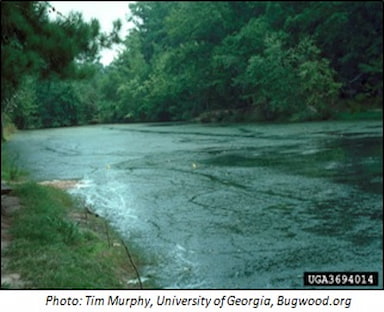
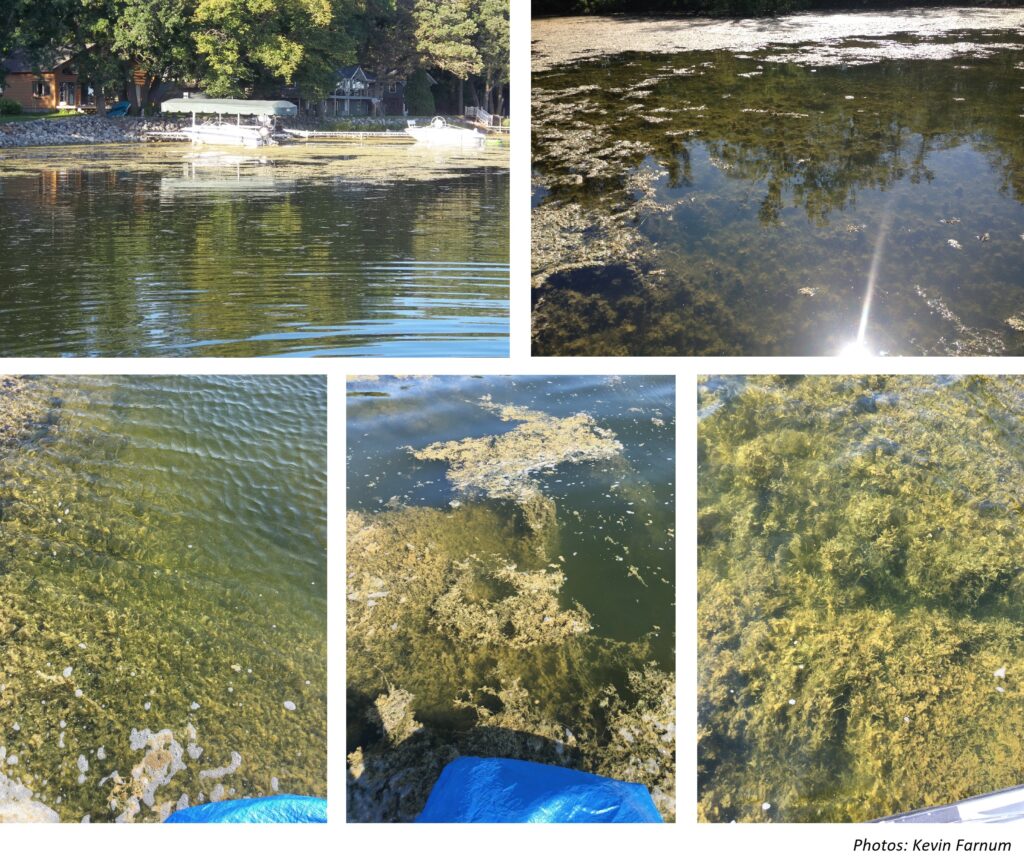
Native macro-algae can be mistaken for Starry Stonewort, including Chara and true stoneworts. Native look-alikes can be viewed on this MN DNR page: https://www.dnr.state.mn.us/invasives/aquaticplants/starrystonewort/index.html.
For more information about AIS, including the impacts of any specific aquatic invasive species, visit the University of Minnesota’s AIS Detector Program.
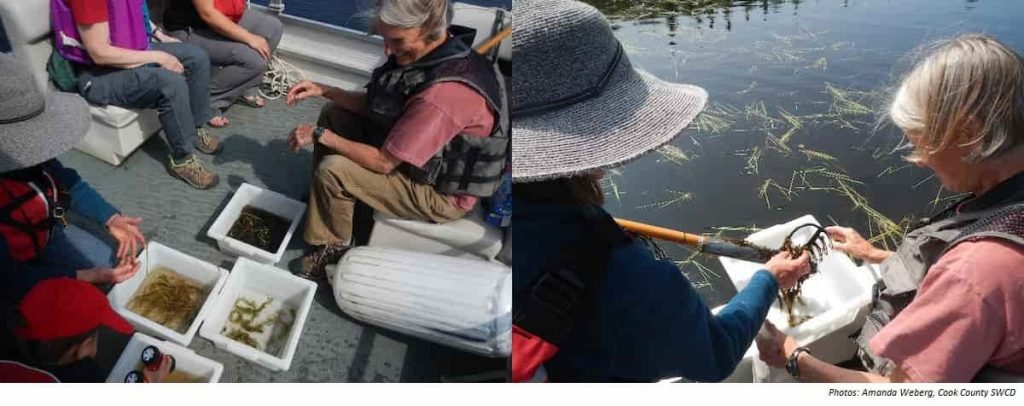
Prevention is slowing the spread
…but the control costs are yours
Inspecting and decontaminating boats is minimizing spread of AIS while scientists develop eradication methods
Preventing the spread of AIS:
- Get educated about AIS currently found in Minnesota that are regulated in the US and in Minnesota, and are a risk of being invasive in Minnesota.
- Take the U of M’s AIS detector course.
- Be on the lookout for new aquatic invasive species.
- Support efforts for AIS inspections and decontamination with your Lake Association.
- Individuals along with associations can and should assist with State and County AIS inspection programs.
- Stopping lake-to-lake boat movement could prevent the spread.
- Ask your guests bringing watercraft to get inspected before they launch.
- Get your watercraft inspected if you visit another lake.
- Establish relationships with your local government for their support.
- County programs exist to help landowners.
- Develop a plan for an AIS inspection and decontamination program.
- Funding can come from counties with MN’s AIS Prevention Aid to assist your association.
- Habitatittude (https://www.habitattitude.net/) teaches about not dumping your aquariums into our waterbodies. It is illegal in Minnesota and is a source of introducing new AIS. This is how Eurasian Watermilfoil was first introduced into the US, by people dumping their aquariums and introducing EWM into our lakes. Invasive crayfish and goldfish are two other examples of the aquarium trade being a vector for introducing new AIS to Minnesota.
- Successful prevention programs are public and private partnerships.
- Start now!
Living with AIS
- Learn about AIS in and near your lake or river to understand control opportunities
- Today, control of AIS plants is effective but expensive
- Eradication is elusive for AIS plants and animal species
- State funding is available for minor control efforts
- Lake Improvement Districts and Watershed projects can be established to “tax” all nearby properties
- Lake and river associations typically bear most of the costs
- Approaches for control depend entirely on the infested species
What can you do as a property owner regarding AIS prevention?
- Get educated about AIS currently found in Minnesota
- Be on the lookout for signs of a new species
- Support efforts for AIS inspections and decontamination
- Ask your visitors bringing watercraft to get inspected before they launch Get your watercraft inspected and decontaminated (if needed) if you plan to visit another lake and before you relaunch at home
What can you do as a property owner to control AIS you already have?
- Get educated about AIS currently found in Minnesota that are regulated in the US and MN, and are a risk of being invasive in MN.
- Take the U of M’s AIS detector course.
- Be on the lookout for new aquatic invasive species.
- Support efforts for AIS inspections and decontamination with your Lake Association.
- Individuals along with associations can and should assist with State and County AIS inspection programs.
- Stopping lake-to-lake boat movement could prevent the spread.
- Ask your guests bringing watercraft to get inspected before they launch.
- Get your watercraft inspected if you visit another lake.
- Establish relationships with your local government for their support.
- County programs exist to help landowners.
- Develop a plan for an AIS inspection and decontamination program.
- Funding can come from counties with MN’s AIS Prevention Aid to assist your association.
- Successful prevention programs are public and private partnerships.
What should you do as a lake or river association regarding AIS prevention?
- Get educated about AIS currently found in Minnesota
- Be on the lookout for signs of a new species
- State and local governments cannot solely keep AIS out of your waterbody. We all need to help
- Develop a plan for an AIS inspection and decontamination program
- Funding these programs is a large issue
- You will have to lean on your association’s waterfront property owners
- Counties have some funding available from Minnesota’s AIS Prevention Aid
- Most successful prevention programs are public/private partnerships
- Establish relationships with your local government for their support
- Look for opportunities for establishing a regional inspection program
- Start now!
What should you do as a lake or river association regarding AIS control?
- Control efforts for AIS plants are expensive and ongoing.
- There are currently no methods for eradicating AIS animals.
- Avoid mechanical harvesting of aquatic invasive plants because each plant fragment will create a new plant.
- Consider biological control approaches if they are available, such as beetles for managing purple loosestrife and weevils for managing Eurasian watermilfoil.
- Lake Improvement Districts and Watershed projects can be established to “tax” all nearby properties for AIS control funding.
- Work with your Local Government Unit’s, COLAs, and LARAs to understand their AIS readiness plans.
- Develop your lake’s own AIS control program.
- Search for best practices from other lakes with the same species.
- Lake and river associations contribute time and resources to control efforts.
- State and local governments may be able to assist in a portion of the resources and control costs of an AIS infestation.
- Most successful control programs are public/private partnerships.
- Establish relationships with your local government for their support.
- Start now!
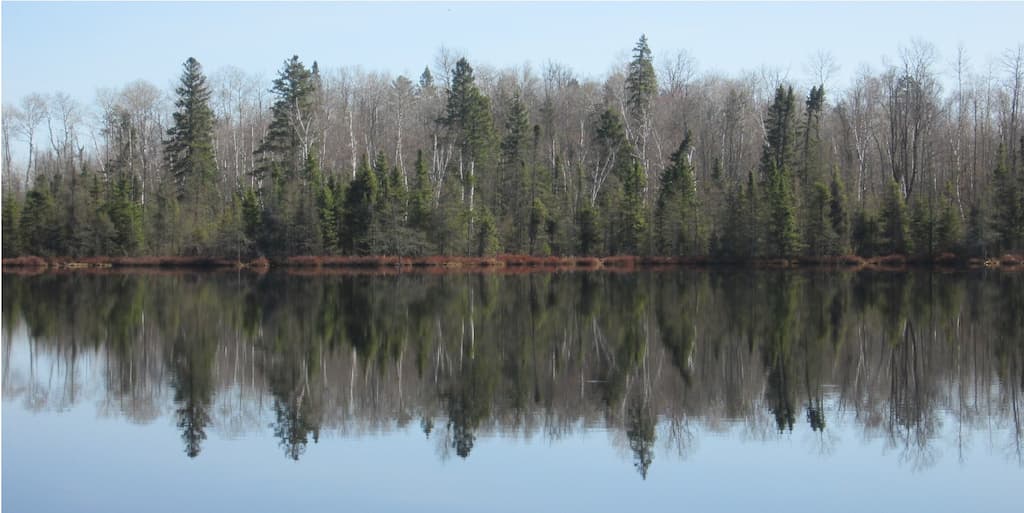
Resources for information about all your AIS needs
AIS contacts in MN counties:
- MN DNR – DNR Aquatic invasive species specialists: Contacts by Region
- MN DNR – County Aquatic Invasive Species (AIS) Prevention Aid: Primary Contacts by County
Sources regarding AIS, by species
- U.S. Geological Survey – Non-indigenous Aquatic Species
- MN DNR – Invasive aquatic plants
- MN DNR – Invasive aquatic animals
- University of Minnesota Extension – Identify invasive species
Minnesota and US AIS rules, laws, and programs
- US EPA – Detecting and monitoring AIS
- MN Statutes – Invasive species
- MN DNR – Invasive species laws
- MN DNR – AIS Programs, Reports, and Partners
- MN DNR – AIS specialists
- MN Sea Grant – AIS campaigns
- University of Minnesota Extension – AIS detector programs
- Pacific Coast Marine Fisheries – Western AIS resource center
- Habitatittude – Protecting the environment
AIS inspection and decontamination programs
- MN DNR – Watercraft inspection program
- MN DNR – Watercraft inspection handbook
- Pacific Coast Marine Fisheries – Watercraft inspection and decontamination manual
- Pacific Coast Marine Fisheries – Uniform minimum protocols and standards on inspection and decontamination programs for zebra/quagga mussels in the western states
Funding sources
- MN Statues – AIS Prevention Aid
- MN DNR – AIS Prevention Aid
- MN DNR – Lake Improvement Districts
- MN Statutes – Watershed District projects
Minnesota’s infested waters list
- MN DNR – Infested waters list
AIS research
- U.S. Geological Survey – USGS Invasive species research
- US Army Corps of Engineers – Aquatic Nuisance Species Research Program
- University of Minnesota – Minnesota AIS Research Center

